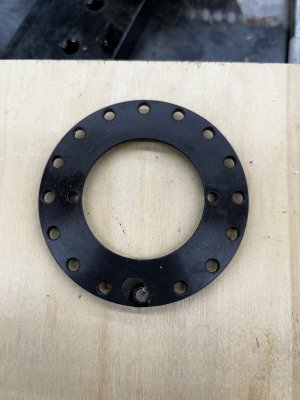Gonna need some hand-holding here...David,
Yes, across pin 7 & 9 (The Cathode (banded side), to the + side pin 9)
The diode is connected reverse bias so current only flows through the diode for a few ms whenever the relay drops out, otherwise it's as if it's not there. So instead of the voltage building up to a damaging spike, as soon as it gets to about 0.7V, the diode conducts and dissipates the energy from the collapsing field back into the relay coil. Almost any diode would do, say a 1n4007 or whatever you have on hand. Any diode with say a 100V or greater rating and 1A or so. I would not activate that output until you install the diode, your playing with fire.
I have no diodes on hand because that would infer that I have a clue what I'm doing 😀
Like this?




